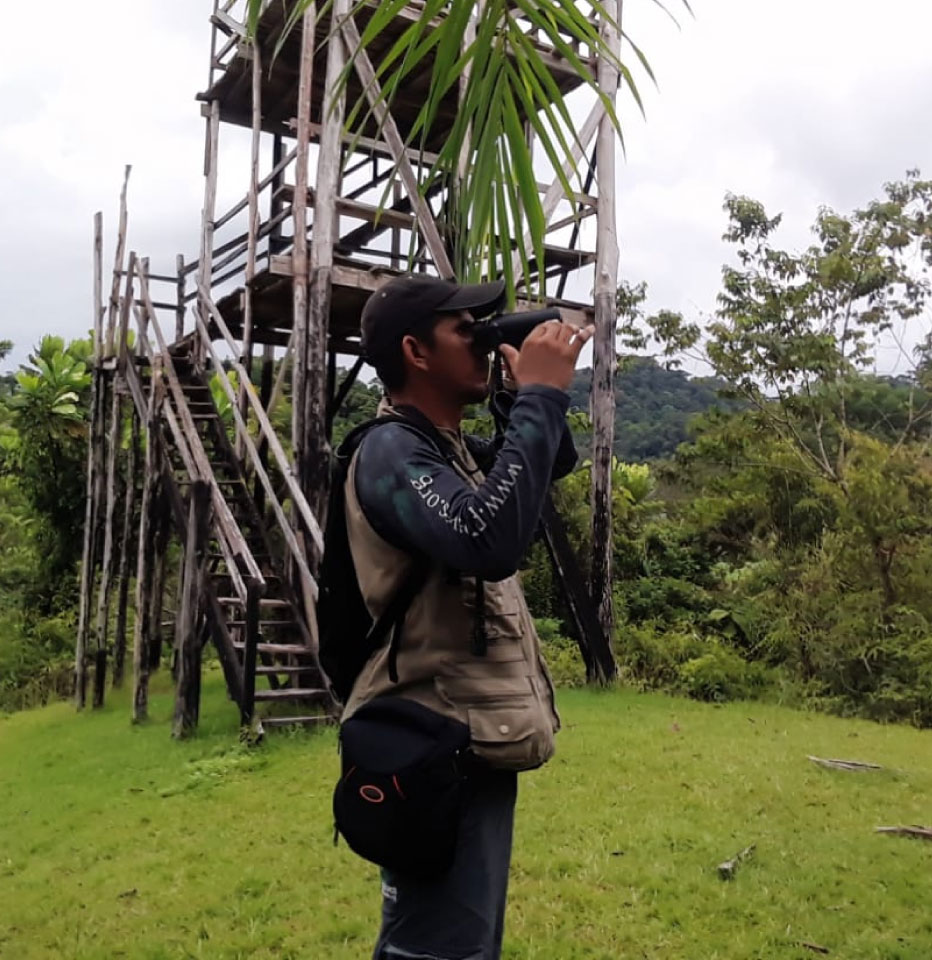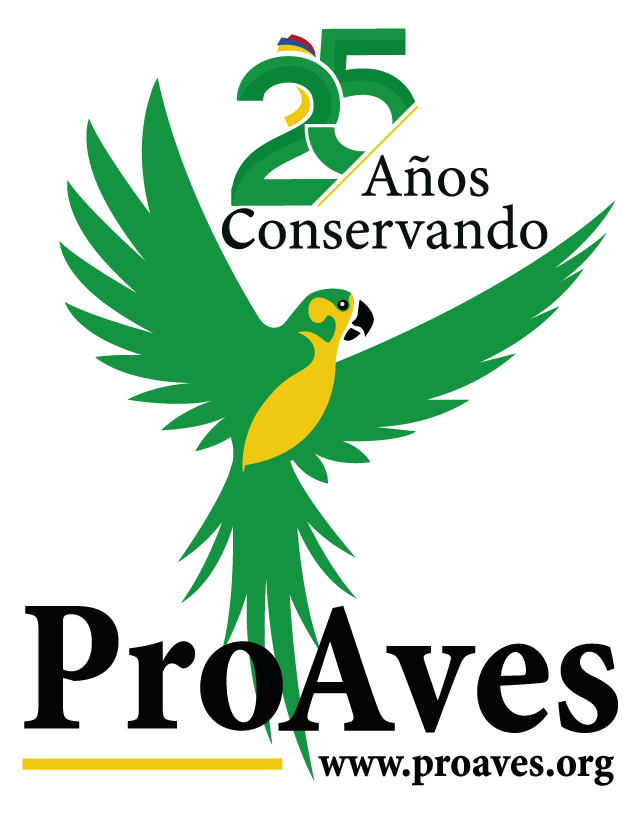
Fundación ProAves – por la conservación en el país de las aves

Among the forests of the Central Andes Colombian Cordillera lies the home of the majestic Antioquia Tapaculo (Lipaugus weberi), an endemic bird of the country, Critically Endangered (CR) of Extinction.
With the aim of protecting this species, ProAves created the ProAves Antioquia Tapaculo Reserve in 2006 for the conservation of this bird that inhabits only small fragments of forest in this mountain range and has seen its habitat affected due to gold mining and large-scale deforestation for pasture establishment.
Date of Establishment:
November
2006

Ecosystem:
Pre-montane humid forest
Temperature:
18°C

Climate:
Bimodal
Altitudinal Range:
Between 1,400 and 1,850 meters above sea level
KEY SPECIES
In this place, around:


LOCATION
HOW TO GET TO ARRIERITO ANTIOQUEÑO PROAVES RESERVE?
- Public transportation:
Take a bus from the COONORTE company to the municipality of Anorí at the Northern Transport Terminal in Medellín.
The Nature Reserve is located 18 km before reaching the municipal seat of Anorí, so you must get off before reaching the municipality. The entrance to Arrierito Antioqueño is located along the main road.
Estimated travel time: Approximately 4 hours.
Arrierito Antioqueño ProAves Reserve is located in the village of El Retiro, municipality of Anorí, department of Antioquia, 148 kilometers from the city of Medellín
- Route: Medellín - Bello - Barbosa - Porce - El Retiro Village - Arrierito Antioqueño ProAves Reserve.

In the Natural Reserve, you can spot the Black Tinamou (Tinamus osgoodi), the Sharpbill (Oxyruncus cristatus), Stiles’s Tapaculo (Scytalopus stilesi), Parker’s Antbird (Cercomacra parkeri), the Bicolored Hawk (Accipiter bicolor), the Red-bellied Grackle (Hypopyrrhus pyrohypogaster), the Multicolored Tanager (Chlorochrysa nitidissima), the Black-and-gold Tanager (Bangsia melanochlamys), and the Cerulean Warbler (Dendroica cerulea), as well as migratory species that visit the Reserve during their non-breeding season.
Regarding amphibians, there are seven species classified as Vulnerable (VU) and four as endangered, as well as five species that have not yet been formally described; it is believed that at least one of them belongs to one of the most threatened groups of frogs, those of the genus Atelopus, which only inhabit this region.
PHOTOGRAPHIC RECORD
The Natural Reserve offers accommodation for 10 people in comfortable rooms with electricity, private bathrooms, and hot water
At the Arrierito Antioqueño ProAves Reserve, you can also:
Birdwatching and wildlife
observation
Hiking along
the reserve's internal trails
Observing
nocturnal wildlife
Spotting the Antioquia Tapaculo
along the trails
Exploring the garden
and its wonderful species of fauna and flora
Watching hummingbirds
at the reserve's feeders
Enjoying the landscapes
of Northeast Antioquia
Photographing
wildlife and flora
Previous slide
Next slide
We recommend a minimum stay of 2 to 3 nights to fully enjoy the activities and the variety of wildlife.

In addition, you will have access to:
- Internet in common areas, which may be intermittent. Take advantage of your stay in our Reserve to connect with nature!
- Water station, coffee, and tea
- Visitor trails and research activities
- Rest areas that allow you to flow with the magic of this wonderful place
Remember: Our reservation rates do not include extra services such as meals or transportation; any of these will have an additional cost and must be requested in advance via WhatsApp: +57 323 434 34 87
- Due to our conservation policies for the care of our species, we are not pet-friendly. We invite you to leave your pets in a safe place.
PLEASE CONSIDER THE FOLLOWING RECOMMENDATIONS:
RESERVATION
Make your reservation 24 hours in advance.
Walk-in reservations are not guaranteed and are dependent on current availability.
CHECK IN AND CHECK OUT
The ProAves Reserve opens at 6:00 a.m. and closes at 8:00 p.m.
Time of entry to your room: From 3:00 p.m. and time of departure from your room: Maximum at 10:00 a.m.
RESERVATION POLICIES
You can change the dates of the reservation, as long as there is availability.
Changes must be requested in writing and 15 days in advance. No refund is made for cancellation.
MEALS
Inform us of any health problems, allergies, or food requirements.
We will offer you a special menu according to your diet.
DO NOT COLLECT
Please, respect the natural resources of the Nature Reserve. The collection of any biological material is not allowed.
TRANSPORT
It’s necessary to travel in a 4×4 vehicle adapted to handle the conditions of some sections of the road.
CLOTHING
Remember that the climate in Colombia can be very unpredictable! We recommend you bring suitable walking shoes, a rain jacket, long-sleeved clothing, a sun hat, and sunscreen.
FLASHLIGHT
In the Natural Reserve there may be power outages, so bring a flashlight and enjoy connecting with nature without the distraction of modern technology.
MOSQUITOES
You do not need a yellow fever vaccine. However, we recommend using repellent since being in contact with nature there may be mosquitoes.
FORBIDDEN TO ENTER ALCOHOL
The entry of alcoholic beverages into the Nature Reserve is forbidden.
INTERNAL TRAILS
Follow the instructions of the Nature Reserve staff and stay on the established trails.
SUSTAINABILITY & CONSERVATION
AT ARRIERITO ANTIOQUEÑO
The Natural Reserve was created on November 27, 2006, to protect the habitat of the Antioquia Tapaculo (Lipaugus weberi). It covers an area of approximately 3,271 acres and is classified by the Alliance for Zero Extinction as an AZE site.
This conservation area includes primary forests, secondary forests, and grasslands in the process of regeneration. Its ecosystem is predominantly mountainous, with around 60% of the land being slopes, 30% hills, and 10% flat areas.
In the ProAves Arrierito Antioqueño Reserve, there are 7 species of vulnerable frogs, 4 of which are endangered and 5 that have not yet been formally identified; it is believed that at least one of them belongs to one of the most threatened frog groups, the Atelopus genus, which only lives in this region.
Furthermore, in this conservation sanctuary, you can spot the Black Tinamou (Tinamus osgoodi), the Sharpbill (Oxyruncus cristatus), Stiles’s Tapaculo (Scytalopus stilesi), Parker’s Antbird (Sercomacra parkeri), the Bicolored Hawk (Accipiter bicolor), the Red-bellied Grackle (Hypopyrrhus pyrohypogaster), the Multicolored Tanager (Chlorochrysa nitidissima), the Black-and-gold Tanager (Bangsia melanochlamys), and the Cerulean Warbler (Dendroica cerulea), a migratory species that visits the reserve during its non-breeding season.
News


